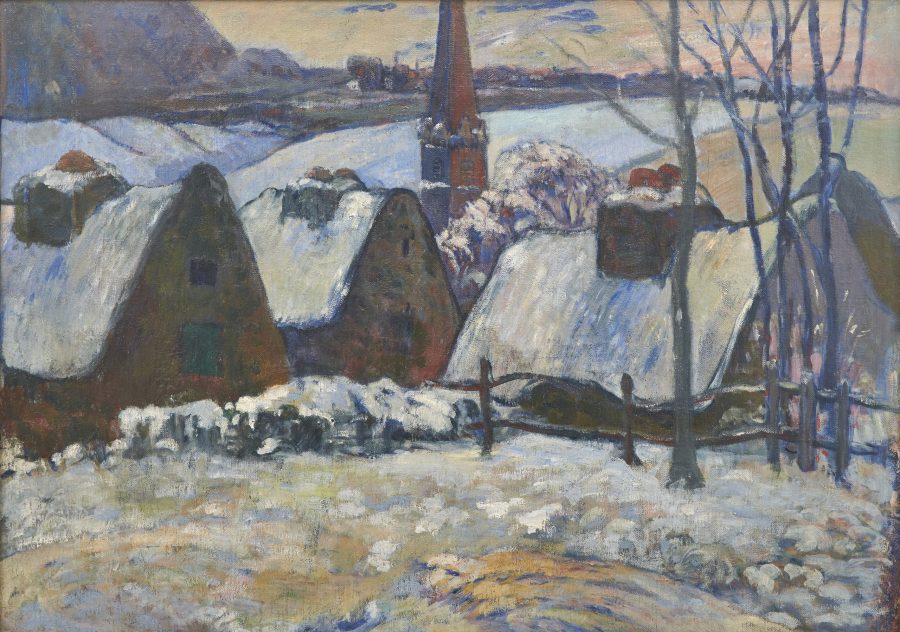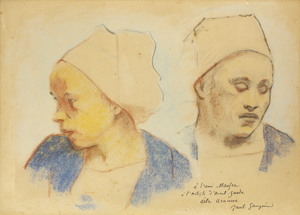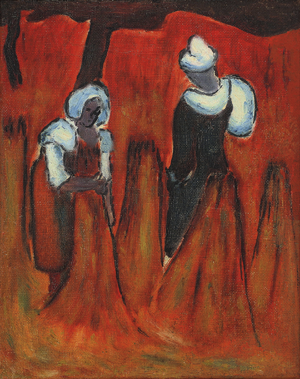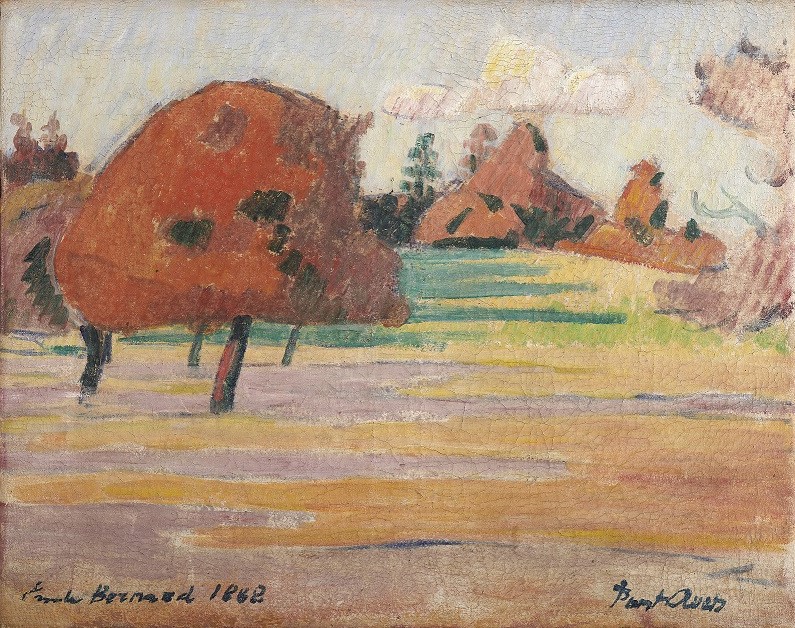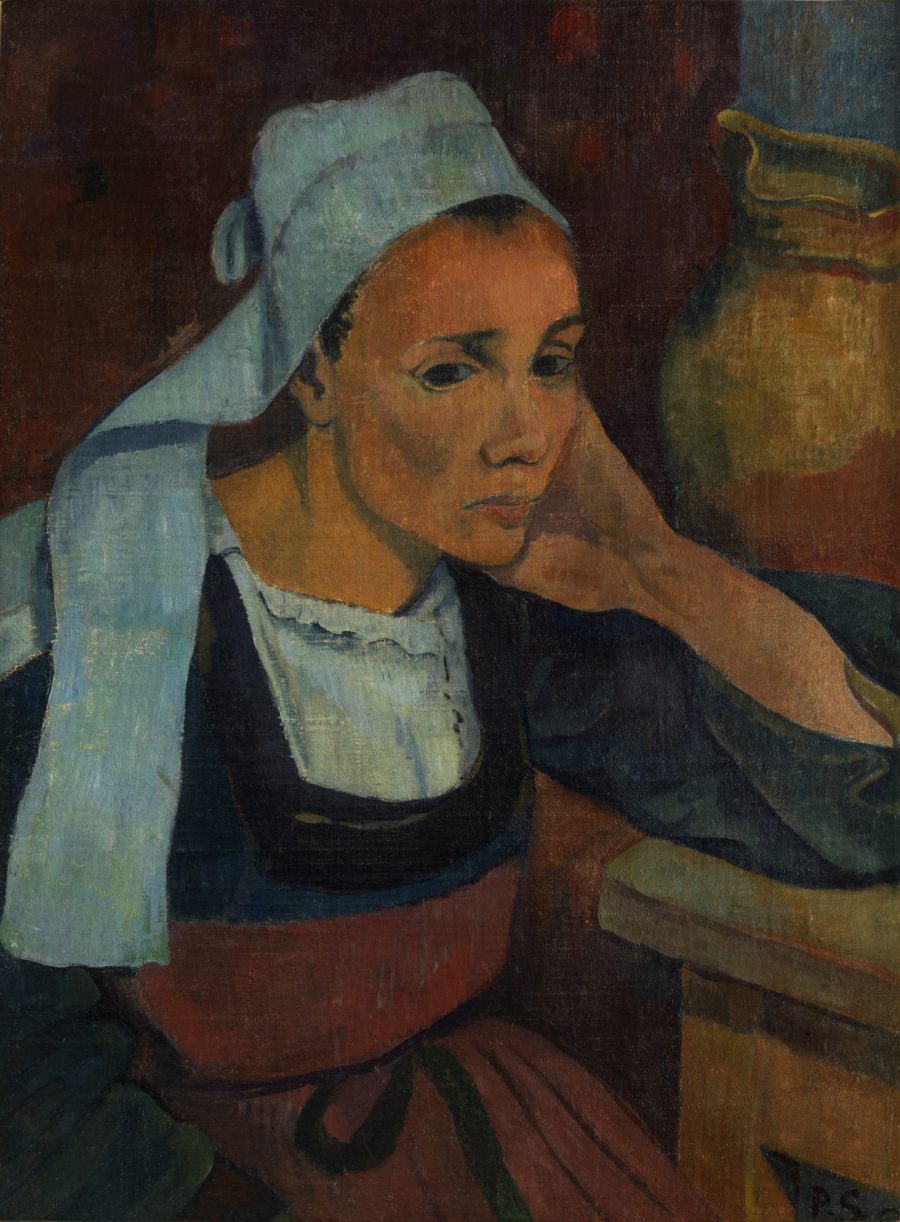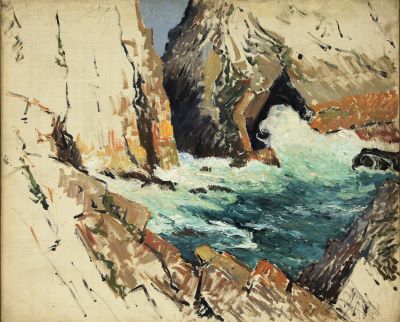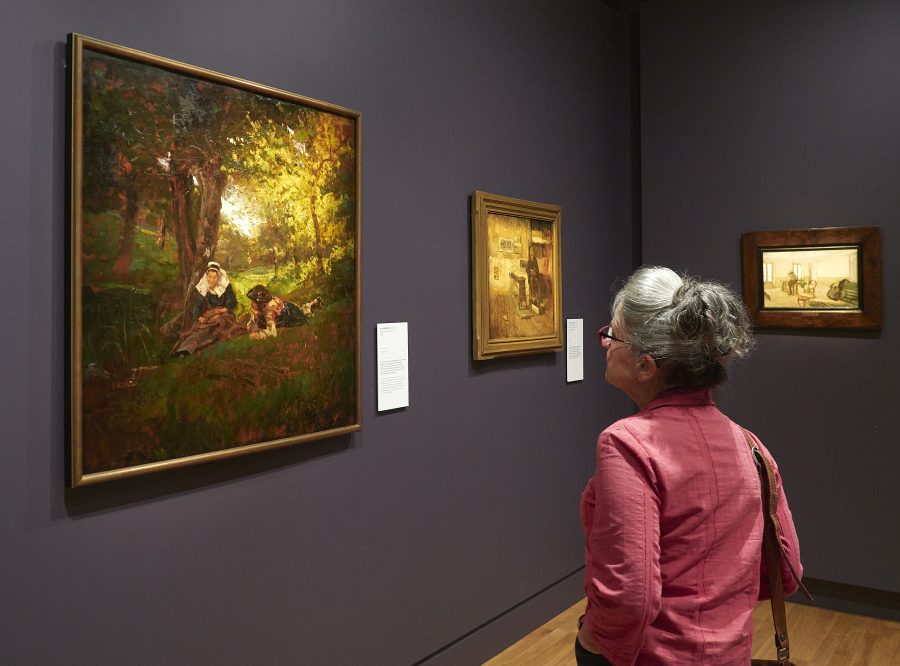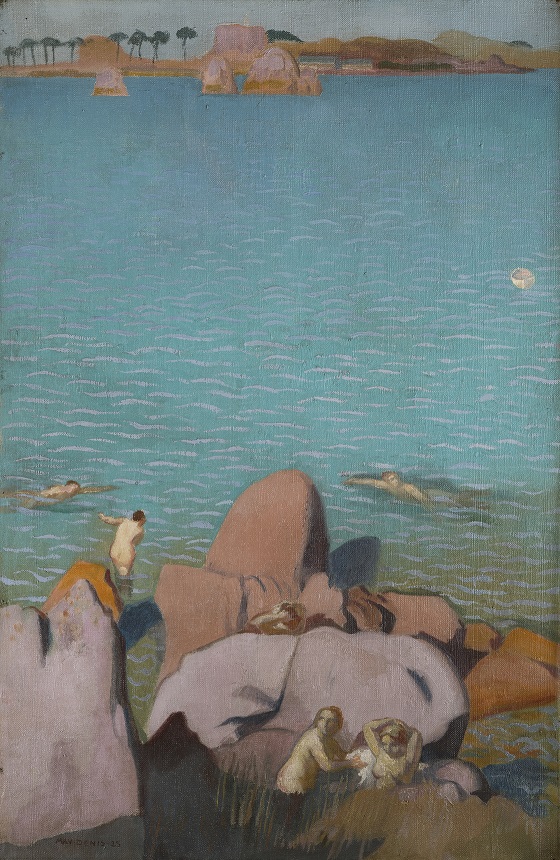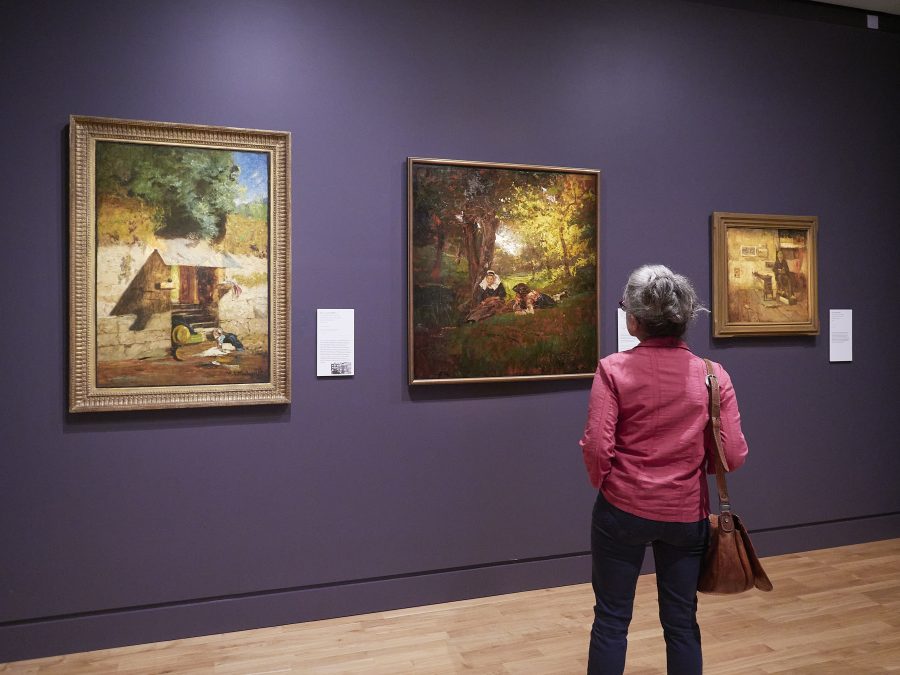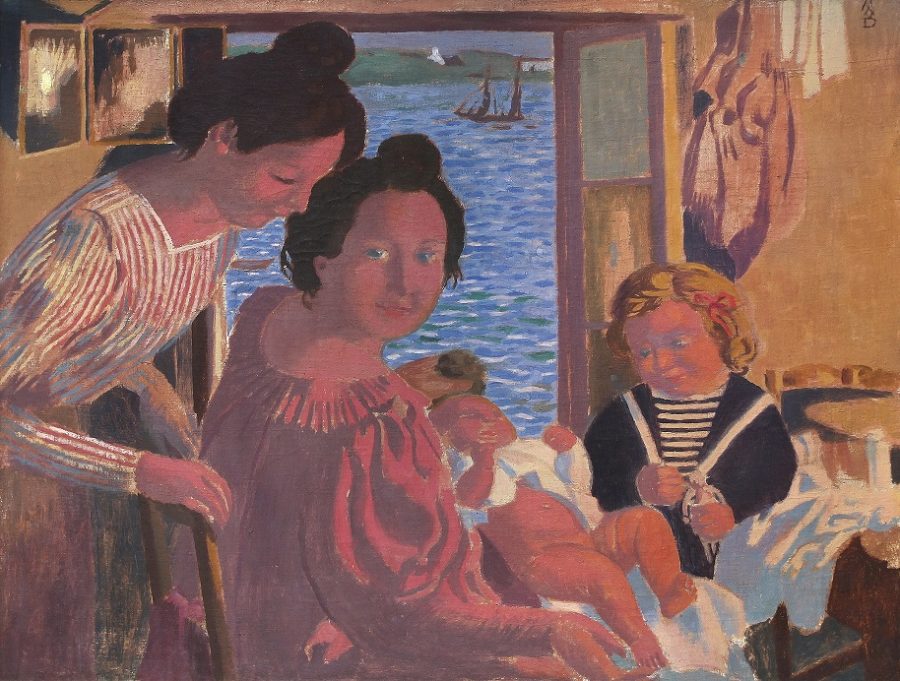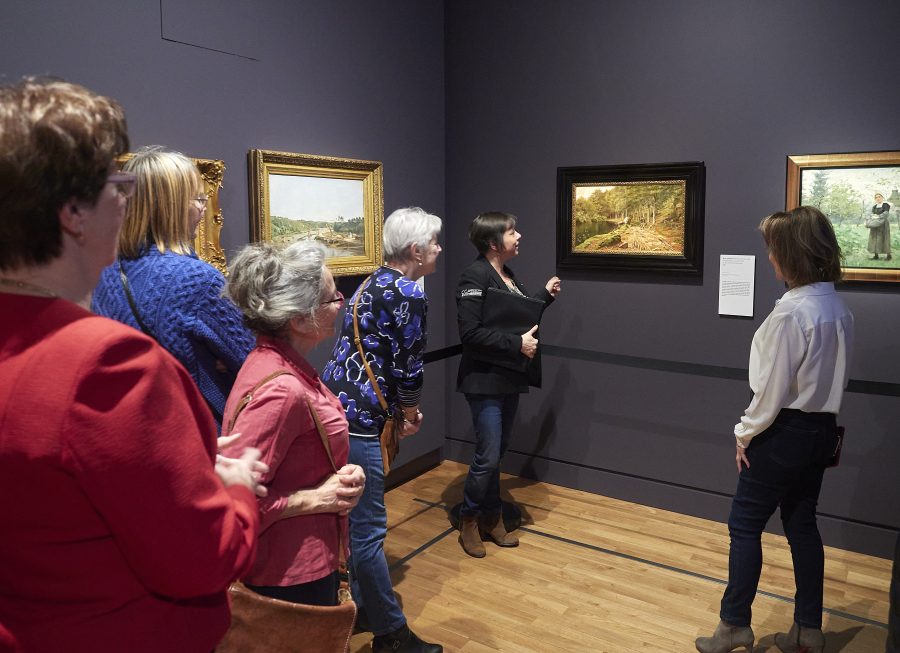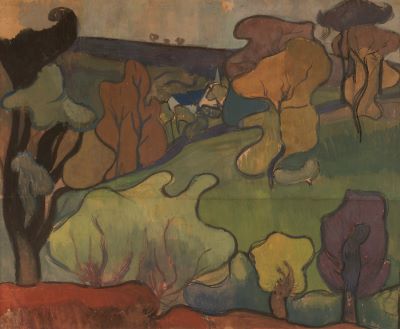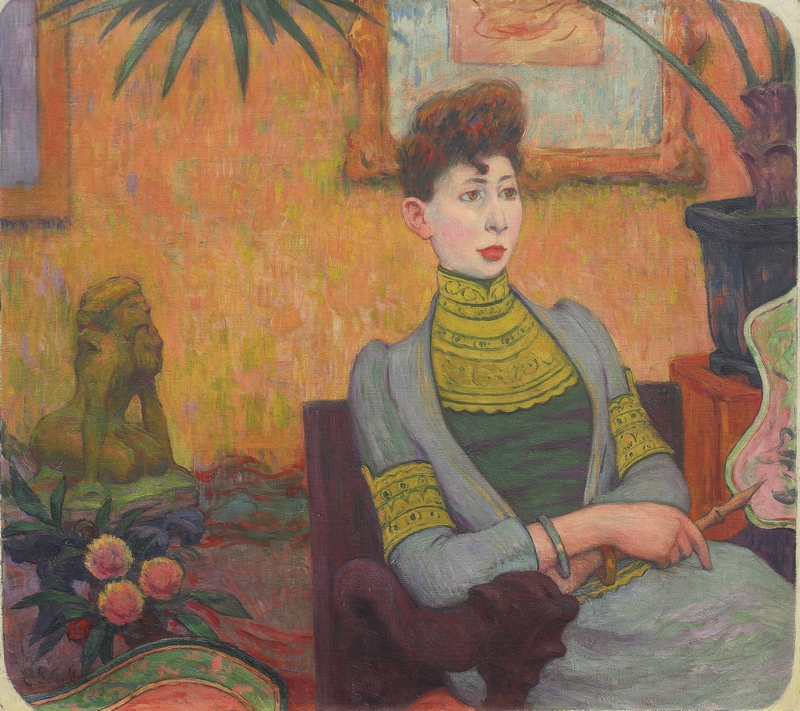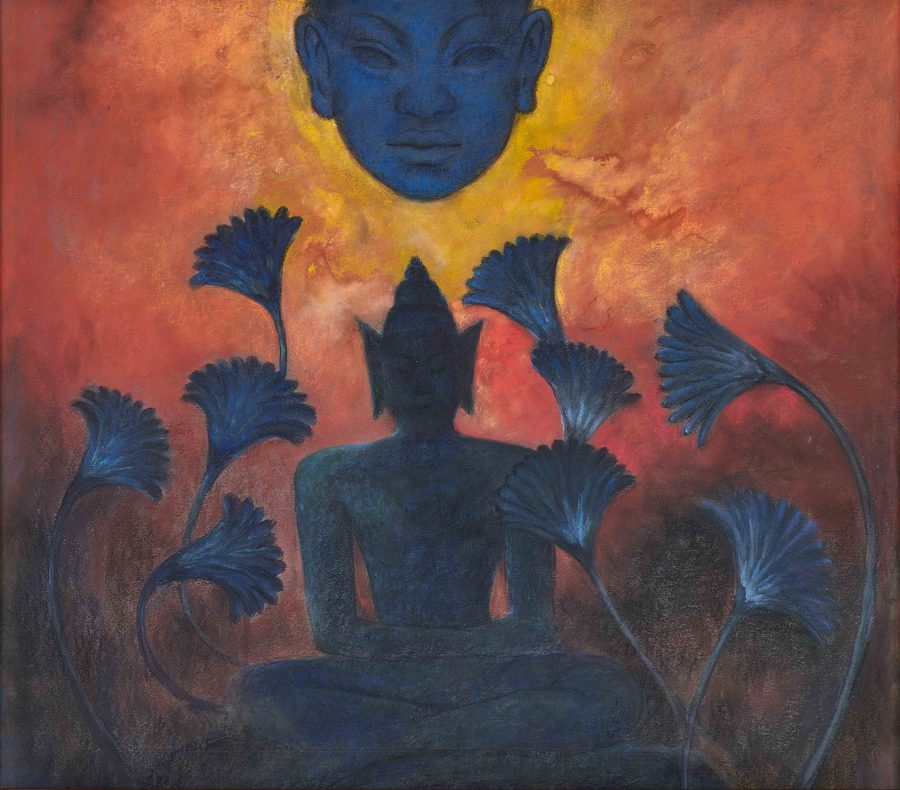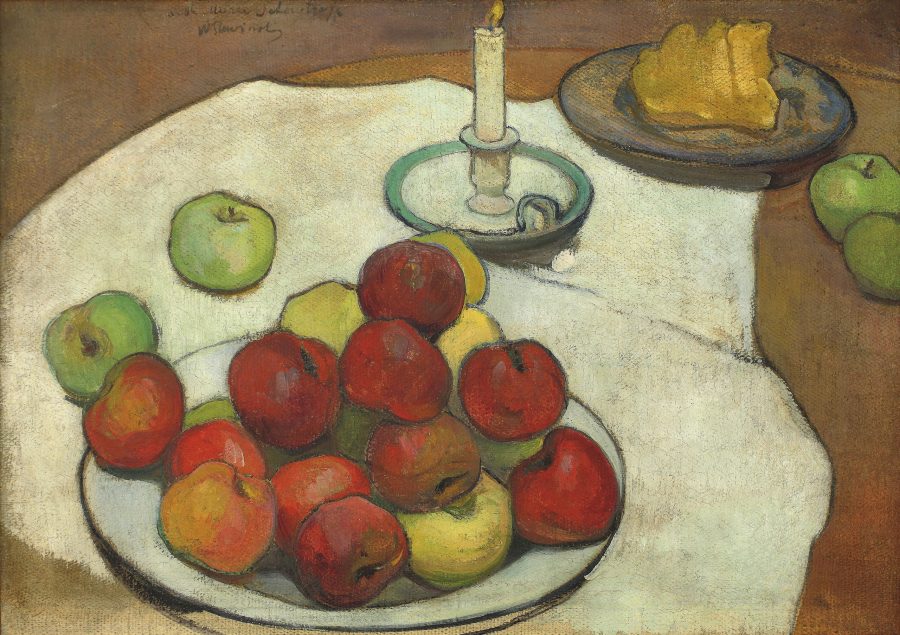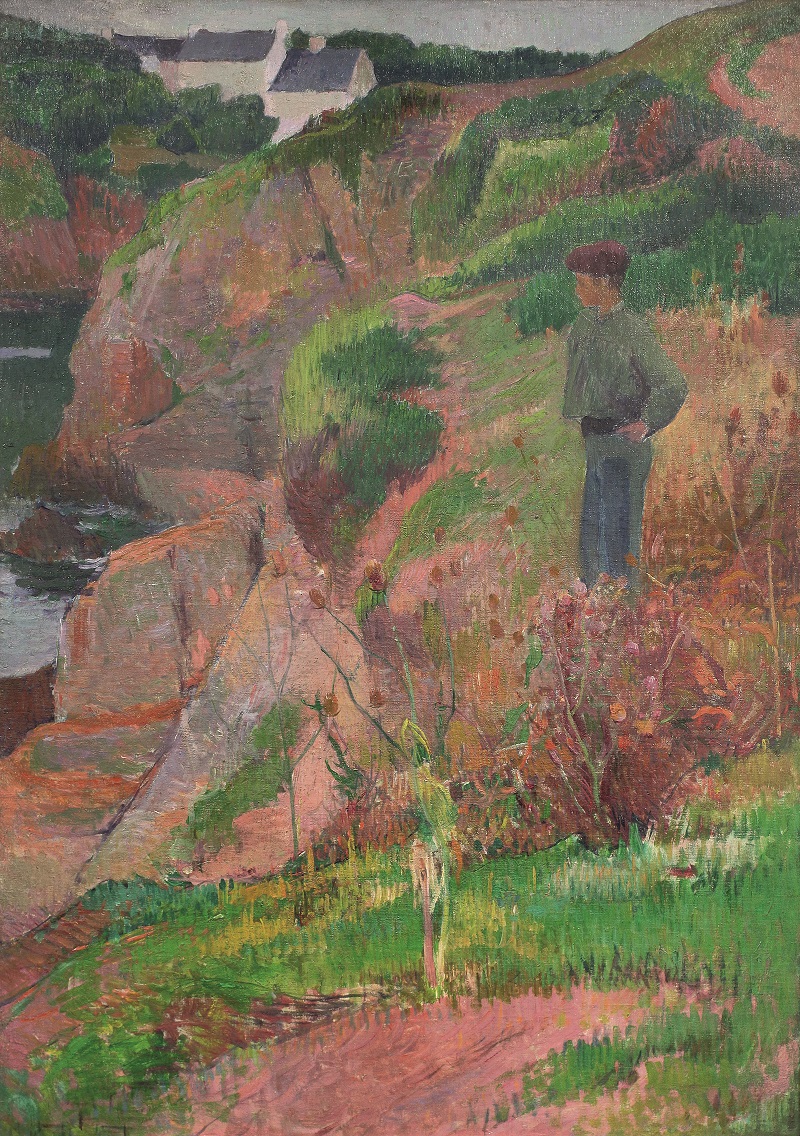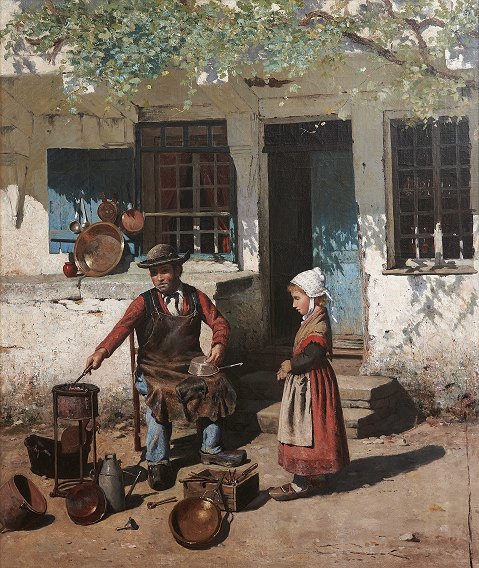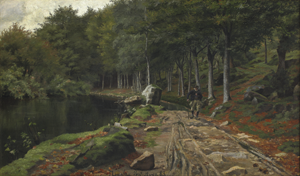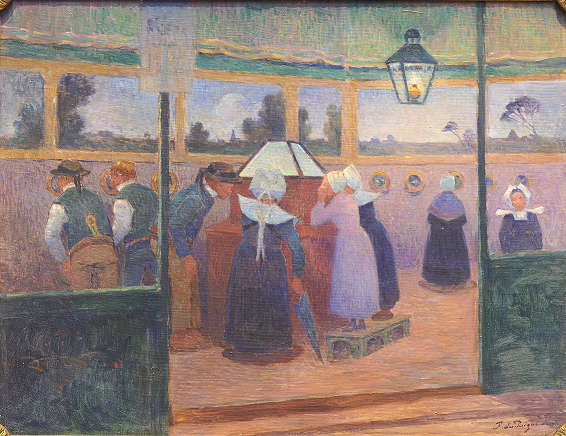Paul GAUGUIN, Ur gêriadenn e Breizh dindan an erc’h
Pa voe gwerzhet madoù Gauguin pa varvas e 1903, e voe prenet meur a daolenn gant Victor Segalen, ofiser mezeg da neuze, a oa o tremen e Papeete. Prenañ a reas evit 7 lur un daolenn souezhus anvet « Lammoù-dour Niagara » (Chutes du Niagara) hag a lakaas an dud er sal da c’hoarzhin. E gwirionez ilpennet e oa bet diskouezet an daolenn war an tu gin gant ar c’homiser-prizachour, rak ur wech lakaet war an tu mat e teu lammoù-dour Niagara da vezañ ar gêriadenn-se e Breizh dindan an erc’h. Diaes eo gouzout resis pegoulz e oa bet savet an oberenn-mañ : ha livet e voe e 1894 pa zeuas Gauguin da Vreizh evit ar wech diwezhañ ha kaset gantañ da Dahiti ? pe neuze e voe livet gant Gauguin e-tro 1898-1899 e Polinezia, evit degas da soñj eus nozvezh an Nedeleg, p’en doa soñj eus Pont-Aven dindan an erc’h dek vloaz a-raok ? E-pad pell e soñjas da Segalen e oa marvet Gauguin en ur livañ an daolenn-mañ. E gwirionez e oa bet miret gant an arzour en e log e Polinezia betek e varv evel un dra brizius pa oa un eñvorenn eus Pont-Aven, lec’h ma oa ganet ar skol brudet.

